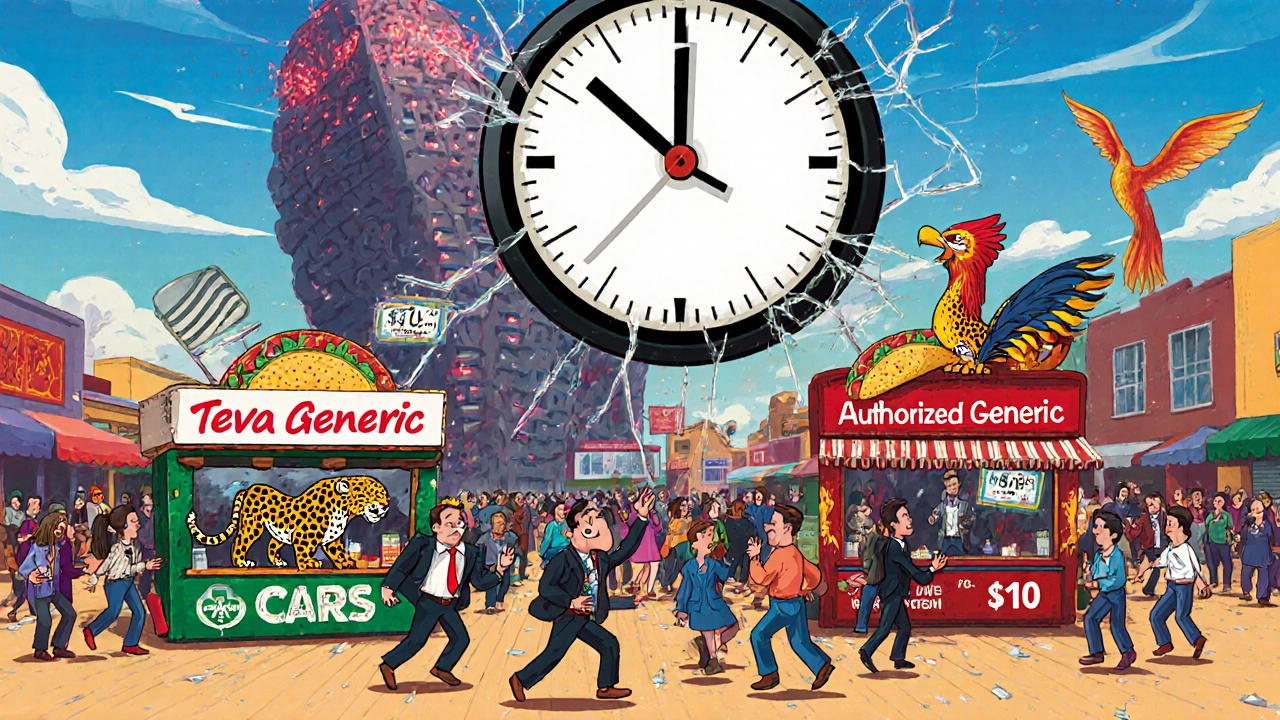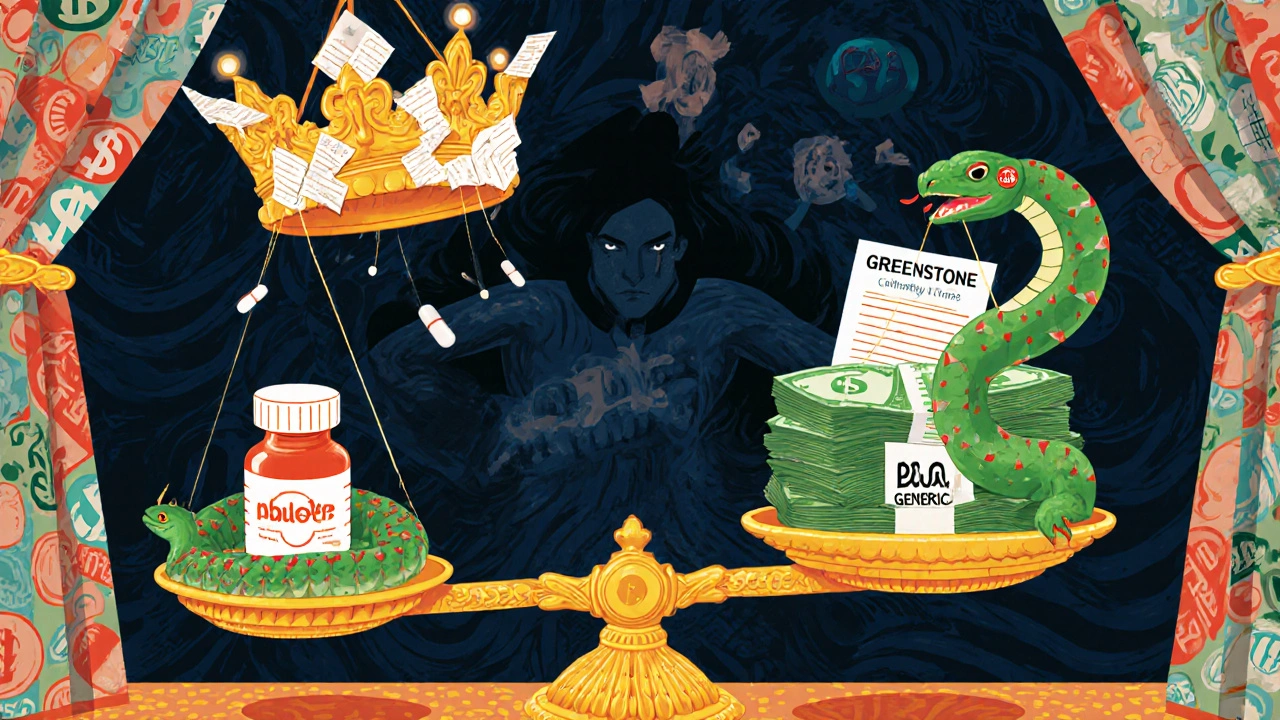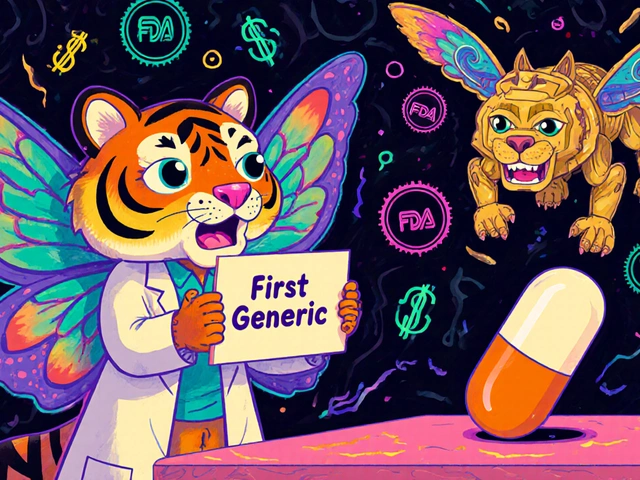When a brand-name drug loses patent protection, the race to bring the first generic version to market isn’t just about speed-it’s about money. And the player who wins that race doesn’t always win the prize. That’s because there’s a hidden competitor: the authorized generic. It’s not a rival company. It’s often the same brand-name drug maker, selling the exact same pill under a cheaper label. And they know exactly when to strike.
What’s the Difference Between First Generic and Authorized Generic?
A first generic is the first company to successfully challenge a brand-name drug’s patent and get FDA approval. They file an Abbreviated New Drug Application (ANDA), prove their version works the same as the original, and if they’re first, they get 180 days of exclusive rights to sell it. During that time, no other generic can enter. That’s the reward under the Hatch-Waxman Act of 1984-designed to push companies to take on the legal and financial risk of patent battles.
An authorized generic is different. It’s made by the brand-name company-or licensed to a partner-but sold as a generic. No ANDA needed. No bioequivalence testing. It’s the same factory, same ingredients, same packaging, just a different label. And here’s the twist: they can launch it anytime. Even the same day the first generic hits shelves.
Think of it like this: You’re the first to open a taco stand across from the big chain. You get a special permit to be the only one for six months. But then, the big chain opens a second stand right next to you, selling identical tacos at the same price. Only now, they’re calling it “Generic Tacos.” You’re not the only one anymore.
Why Timing Is Everything
The 180-day exclusivity period was meant to be a jackpot. First generics could capture 70-90% of the market. For a blockbuster drug, that meant $100 million to $500 million in revenue. But in practice, that window has shrunk-sometimes to just 45 days.
Why? Because brand companies now time their authorized generics to drop within 90 days of the first generic’s launch. In fact, over 40% of them launch on the exact same day, according to Health Affairs research (2022). This isn’t coincidence. It’s strategy.
Take Lyrica (pregabalin). Pfizer’s brand version was a $3 billion-a-year drug. When Teva became the first to launch a generic in July 2019, Pfizer immediately rolled out its own authorized generic through Greenstone LLC. Within weeks, Teva’s market share dropped from 80% to under 50%. Pfizer’s version grabbed 30% of sales. Teva didn’t lose the race-it lost the payout.
It’s not just Lyrica. This happens with drugs like Eliquis, Jardiance, and Neurontin. The pattern is consistent: as soon as the first generic clears FDA approval, the brand manufacturer hits the gas on their authorized version. The result? Prices don’t drop as hard. Instead of the usual 80-90% price reduction, you see only 65-75%. That’s billions in lost savings for patients and insurers every year.

How the System Was Supposed to Work
The Hatch-Waxman Act was built on a simple idea: reward the first challenger. If a generic company spends millions on lawsuits and years of development to break a patent, they should get a head start. That’s how you get more generics faster-and lower prices for everyone.
But authorized generics break that deal. They don’t challenge the patent. They don’t risk the legal battle. They just wait. Then, when the first generic finally wins, they step in with a product that’s identical. No R&D. No litigation. No cost. Just timing.
The FDA doesn’t stop them. In fact, they don’t even treat authorized generics as “generic competitors” under the Inflation Reduction Act of 2022. That’s because they’re not really generics in the traditional sense. They’re brand drugs in disguise. And the law knows it.
Who Wins and Who Loses
Let’s break it down.
- Brand manufacturers win. They keep control of the market. They get to charge the same price they always did-just under a different label. They also avoid the stigma of being the “expensive” brand.
- Authorized generic manufacturers win. They get a ready-made product with no regulatory hurdles. They make money without the risk.
- First generic companies lose. They spent years and millions. They won the patent challenge. And then they get undercut on day one. Many now avoid patent challenges entirely because the payoff isn’t worth it.
- Patients and insurers lose too. Prices don’t fall as far or as fast. Generic drugs are supposed to cut costs. But when the brand company is the one selling the “generic,” they control the price.
According to RAND Corporation, this tactic has saved brand companies billions in lost revenue while delaying real savings for the healthcare system. The Association for Accessible Medicines says authorized generics increase competition-but that’s only true if you ignore who’s doing the competing.

What’s Changing Now?
The FTC has taken notice. After the 2013 Supreme Court ruling in FTC v. Actavis, courts started looking harder at deals where brand companies pay generics to delay entry. But authorized generics aren’t always part of those deals-they’re legal, just ruthless.
Some generic manufacturers are adapting. Leading firms now build “dual-path” strategies: they don’t just rely on being first. They also partner with brand companies to get early access to authorized generics. Others are shifting focus to complex generics-drugs that are harder to copy, like inhalers or injectables-where the barriers to entry are higher and authorized generics are less common.
And the numbers show this shift. In 2022, authorized generics made up 18% of all generic prescriptions. By 2027, Evaluate Pharma predicts that number will hit 25-30%. That means more than one in four generic pills sold will be made by the brand company itself.
What This Means for the Future
The game has changed. Being first doesn’t mean you win anymore. It just means you’re the target.
If you’re a generic manufacturer, you can’t just file an ANDA and wait. You need to predict when the brand will launch their version. You need to know if they’ve already licensed their own generic to a partner. You need to calculate if your 180-day window will even be profitable.
And if you’re a patient, a pharmacist, or a payer-you need to know that the “generic” on your shelf might not be a competitor. It might be the brand in disguise. And if it is, the price won’t drop as much as you think.
The system was designed to lower costs. But when the same company controls both the brand and the “generic,” the rules of competition get rewritten. And the savings? They disappear-slowly, quietly, and legally.

